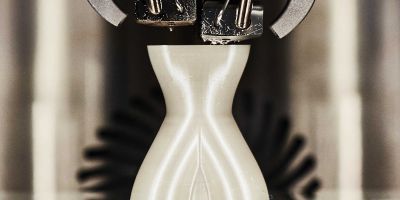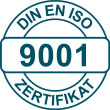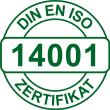Heat resistant plastics
Manifold made of ULTEM™ 9085 | FFF process | Application: plant engineering
Great potential for use of heat-resistant plastics in high-tech applications
Plastics are often not considered for high-temperature applications, although a large number of heat-resistant plastics are now available. Combining the other advantages of these heat-resistant plastics, such as low friction, low weight and chemical resistance, results in technically interesting solution possibilities.
Heat-resistant plastics as a substitute for metals
In many modern applications, the primary concern is weight savings. Developers are faced with the challenge of saving weight at the same time as achieving higher performance. The use of plastic components is of course an excellent solution, and the use of heat-resistant plastics significantly expands the spectrum. It is possible with our range of high-performance plastics to achieve operating temperatures above 150°C and even 300°C on a permanent basis. The properties of heat-resistant plastics can be further improved with fillers such as glass or carbon fibres, and the heat resistance, thermal expansion and dimensional stability can be significantly influenced. By choosing the right plastic with possible modification, one comes very close to values known from metal alloys.
Developing heat-resistant plastic parts with Hänssler
Selecting the right high-performance plastics is a challenge. Here, you can rely on our expert knowledge. The best-known heat-resistant plastics are PEEK, PPS, PEI, PVDF, PES, PI, PPSU, PSU and PTFE, all of which can be combined with a wide variety of fillers. This results in an enormous number of possible combinations. Our development and design staff will support you right from the product development process in selecting the right material and the optimum manufacturing process. Contact us as early as possible and we will accompany you from the idea to the finished product.

Heat-resistant plastics allow permanently high operating temperatures
Heat-resistant plastics can also be manufactured additively
Not only the choice of the appropriate high-performance plastic, but also the manufacturing process is crucial for a cost-effective and optimal component. Meanwhile, some materials for high-temperature applications can be processed not only by machining, but also by means of additive manufacturing (3D printing). If the geometry becomes too complex, components made of PEEK or PPS, for example, can be additively manufactured. If fits or threads are required on the components, these printed components can also be mechanically reworked.

Device for sterilization made of Ultem 1010 | FFF process | Application: medical technology
Discover unique technical 3D printing solutions from our expert team
Your experts for heat-resistant plastics














